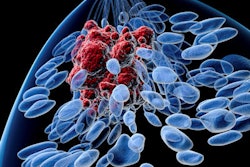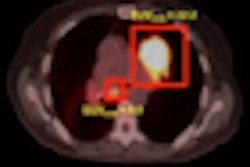PET imaging with FDG and a radiopharmaceutical that targets estrogen receptors can help physicians gather more information in difficult breast cancer cases, according to two studies in the February issue of the Journal of Nuclear Medicine.
In one study, Dutch researchers used whole-body PET with fluorine-18 fluoroestradiol (F-18 FES) to determine estrogen-receptor expression in estrogen-receptor-positive metastatic breast cancer.
The study from University Medical Center Groningen included FES-PET studies of 33 women with a history of estrogen-receptor-positive breast cancer and an inconclusive assessment of their respective conditions.
Dr. Geke Hospers, PhD, and colleagues concluded that FES-PET improved diagnostic information in 88% of subjects and prompted a change in treatment in 48%. The molecular imaging technique was found to be especially helpful for detecting bone metastases.
In the second study, researchers from Hôpital Saint-Louis in Paris prospectively evaluated 20 patients with triple-negative breast cancer who received chemotherapy before scheduled surgery.
The participants underwent PET imaging with F-18 FDG at the start of chemotherapy and again after the second cycle of treatment to determine metabolic changes in tumors during therapy. At the point of surgery, the scans indicated that therapy was completely successful in six patients, while 14 others were found to have remaining tumors.
Patients with less than a 42% decrease in metabolism of the agent after two cycles of chemotherapy still had some residual cancer after treatment and were therefore at high risk of early relapse, the researchers concluded.
"Interim [F-18 FDG-PET/CT] could become a major tool for early response assessment of this aggressive cancer, similar to the role that [F-18 FDG] plays in assessing aggressive lymphomas," said Dr. David Groheux, a principal researcher in the department of nuclear medicine.



















